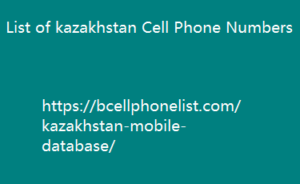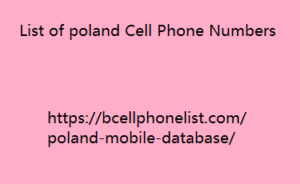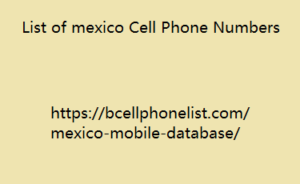Creating a Safe Space: Fostering Inclusion and Belonging
Creating a Safe Space: Fostering Inclusion and Belonging
A safe space is a physical or virtual environment where individuals feel secure, supported, and free to express themselves without fear of judgment or discrimination. It’s a place where people can connect, heal, and grow.
The Importance of Safe Spaces
Safe spaces are essential for:
Mental Health: They provide a refuge Cell Phone Number List Kazakhstan from stress, anxiety, and discrimination.
Community Building: They foster a sense of belonging and connection among individuals.
Personal Growth: They create an environment for self-expression, learning, and development.
Social Justice: They challenge oppressive systems and promote equality.
Creating a Safe Space
To create a safe space, consider these key elements
Physical Environment: Design a welcoming and inclusive space with comfortable seating, calming colors, and appropriate lighting.
Psychological Safety: Establish clear guidelines and expectations for respectful behavior.
Inclusivity
Ensure the space is accessible to everyone, regardless of race, gender, sexual orientation, ability, or background.
Active Listening: Encourage open communication and create a space where people feel heard and valued.
Respect for Boundaries: Establish clear boundaries and respect individual needs and comfort levels.
Safe Spaces in Different Contexts
Safe spaces can be created in various settings:
Schools and Universities: Student Is Your Phone Leading You to Distraction Disaster? centers, counseling offices, and diversity clubs can provide safe spaces for students.
Workplace: Inclusive company cultures and employee resource groups can foster safe spaces for employees.
Online Communities: Social media platforms and online forums can be used to create virtual safe spaces.
Community Centers: Local organizations can offer safe spaces for marginalized groups.
Challenges and Considerations
Creating and maintaining safe spaces is an ongoing process. Challenges may include:
Power Dynamics: Addressing power imbalances within a group to ensure equal participation.
Conflict Resolution: Developing strategies for handling disagreements and conflicts respectfully.
Sustainability
Ensuring the long-term viability of safe spaces through ongoing support and resources.
By prioritizing the creation and maintenance of safe spaces, we can foster a more inclusive and equitable society where everyone feels valued and respected.


















